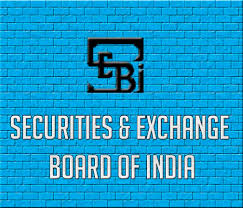May 18 2010 , FC Research Bureau
Taking a long-term view on the broader market beyond three years will get easier from May 8 when the National Stock Exchange (NSE) introduces three more semi-annual month option contracts on the S&P CNX Nifty index going as far into the future as June 2015.
There will be eight semi-annual contract months instead of the existing five, encompassing June-end and December-end contracts for 2011-2014 and June-end contract for 2015.
But as a retail investor, should you make use of such long-term investment instrument? The views in the market are mixed, although the recent trend in existing long-tenure Nifty options, with tenure going up to three years, seems to suggest decent demand for such contracts (see table).
The Securities and Exchange Board of India (Sebi) on May 4 permitted stock exchanges to go for long-tenure index options, going up to a maximum length of five years. It was in January 2008 that Sebi had allowed exchanges to trade index options for tenures beyond the existing ones of less than a year but up to a maximum of three years.
Market experts do not recommend long-tenure options for retail investors. Bajaj Capital research head Alok Agarwala said, “These options should be used for hedging rather than making directional calls on the market.”
He said investors seeking exposure to Nifty can go for exchange-traded funds (ETFs) on Nifty or Nifty index funds. “ETFs are preferable as they have lower fund management charges,” he said.
However, there are two attractive benefits for the investors taking a long-term view on the overall market. In buying a Nifty call option, one is protected from unlimited losses in case the index crashes, something that is not possible in a Nifty ETF or index fund.
The other benefit is one can take a long-term bearish view by purchasing Nifty put options but one can’t go short on a Nifty ETF or index fund.
However, investors would need to watch out for the amount of premium they pay for a five-year Nifty option contract. In options trade, the premium includes intrinsic and time value of the option. “The longer the time to expiry, the higher will be the premium,” says Agarwala.
Benchmark Asset Management executive director Sanjiv Shah said, “If you have to pay a premium that is 20 to 25 per cent higher than the spot index, then you are giving away a lot of the gains on the index.”
You could go for long-tenure Nifty options, but be alert for such stumbling blocks.
rajeshgajra
@mydigital
There will be eight semi-annual contract months instead of the existing five, encompassing June-end and December-end contracts for 2011-2014 and June-end contract for 2015.
But as a retail investor, should you make use of such long-term investment instrument? The views in the market are mixed, although the recent trend in existing long-tenure Nifty options, with tenure going up to three years, seems to suggest decent demand for such contracts (see table).
The Securities and Exchange Board of India (Sebi) on May 4 permitted stock exchanges to go for long-tenure index options, going up to a maximum length of five years. It was in January 2008 that Sebi had allowed exchanges to trade index options for tenures beyond the existing ones of less than a year but up to a maximum of three years.
Market experts do not recommend long-tenure options for retail investors. Bajaj Capital research head Alok Agarwala said, “These options should be used for hedging rather than making directional calls on the market.”
He said investors seeking exposure to Nifty can go for exchange-traded funds (ETFs) on Nifty or Nifty index funds. “ETFs are preferable as they have lower fund management charges,” he said.
However, there are two attractive benefits for the investors taking a long-term view on the overall market. In buying a Nifty call option, one is protected from unlimited losses in case the index crashes, something that is not possible in a Nifty ETF or index fund.
The other benefit is one can take a long-term bearish view by purchasing Nifty put options but one can’t go short on a Nifty ETF or index fund.
However, investors would need to watch out for the amount of premium they pay for a five-year Nifty option contract. In options trade, the premium includes intrinsic and time value of the option. “The longer the time to expiry, the higher will be the premium,” says Agarwala.
Benchmark Asset Management executive director Sanjiv Shah said, “If you have to pay a premium that is 20 to 25 per cent higher than the spot index, then you are giving away a lot of the gains on the index.”
You could go for long-tenure Nifty options, but be alert for such stumbling blocks.
rajeshgajra
@mydigital






